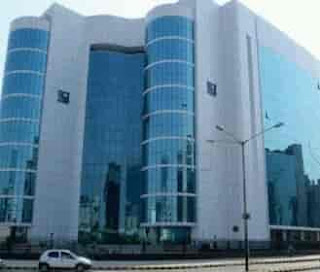UGC NET ,UPSC and other competitive Exams (Microeconomics) Comes back to scale(Return to a scale) creation work
 |
| Return to a scale |
In financial aspects, comes back to scale and since a long time ago run normal all out expense are connected however various ideas that depict what occurs as the size of creation increments over the long haul, when all information levels including physical capital use are variable (picked by the firm). The idea of profits to scale emerges with regards to a company's creation work. It clarifies conduct of the pace of increment in yield (creation) comparative with the related increment in the sources of info (the variables of creation) over the long haul.
Over the long haul all components of creation are variable and liable to change because of a given increment in size (scale). While economies of scale show the impact of an expanded yield level on unit costs, comes back to scale center just around the connection among information and yield amounts.
There are three potential kinds of profits to scale:
1)expanding comes back to scale,
2) steady comes back to scale,
3)lessening (or diminishing) comes back to scale.
Whenever yield increments by a similar corresponding change as all sources of info change then there are steady comes back to scale (CRS).
Whenever yield increments by not as much as that corresponding change in all contributions, there are diminishing comes back to scale (DRS)
. Whenever yield increments by more than the relative change in all contributions, there are expanding comes back to scale (IRS).
An association's creation capacity could display various sorts of profits to scale in various scopes of yield. Ordinarily, there could be expanding returns at generally low yield levels, diminishing returns at moderately high yield levels, and consistent returns at one yield level between those reaches.
In standard microeconomics, the profits to scale looked by a firm are absolutely mechanically forced and are not affected by financial choices or by economic situations
Model
At the point when the utilizations of all sources of info increment by a factor of 2, new qualities for yield will be:
Double the past yield if there are steady comes back to scale (CRS)
Not as much as double the past yield if there are diminishing comes back to scale (DRS)
More than double the past yield if there are expanding comes back to scale (IRS)
Accepting that the factor costs are consistent (that will be, that the firm is an ideal rival in completely input markets) and the creation work is homothetic, a firm encountering steady returns will have consistent since a long time ago run normal costs, a firm encountering diminishing returns will have expanding since quite a while ago run normal expenses, and a firm encountering expanding returns will have diminishing since quite a while ago run normal costs. Be that as it may, this relationship separates if the firm doesn't confront superbly serious factor markets (i.e., right now, value one pays for a decent depends on the sum bought). For instance, if there are expanding comes back to scale in some scope of yield levels, however the firm is so huge in at least one info advertises that expanding its acquisition of an information drives up the info's per-unit cost, at that point the firm could have diseconomies of scale in that scope of yield levels. On the other hand, on the off chance that the firm can get mass limits of an information, at that point it could have economies of scale in some scope of yield levels regardless of whether it has diminishing returns underway in that yield run.





This comment has been removed by a blog administrator.
ReplyDelete